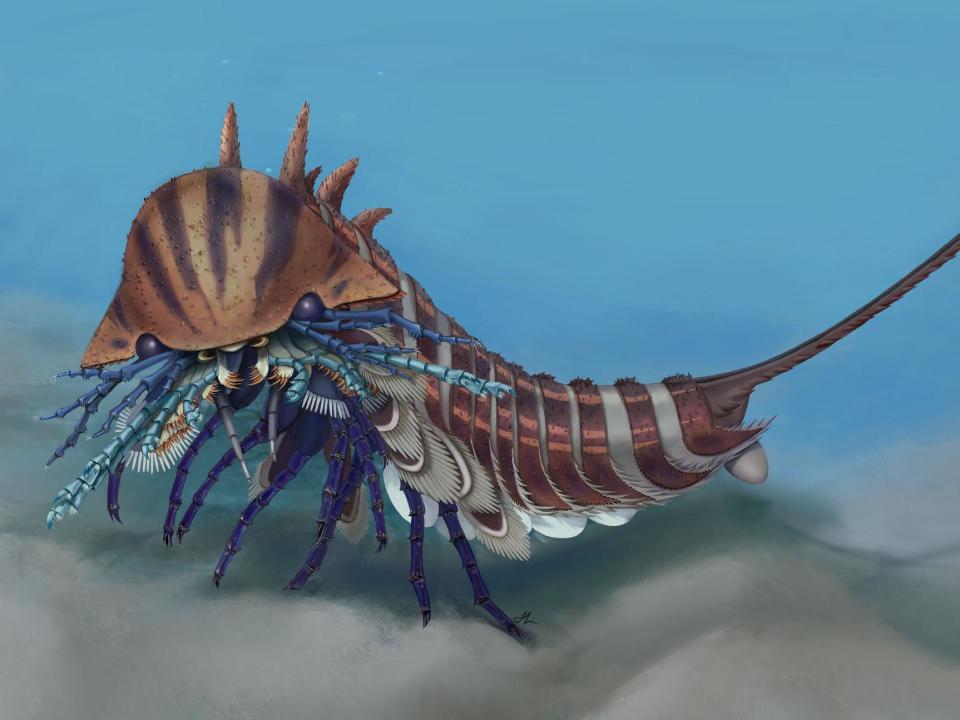‘Exceptionally fierce’ scorpion-like creature lived 508 million years ago, scientists say
An ancient underwater predator found preserved in the Canadian Rockies is an ancient relative of spiders and scorpions, according to new research.
The creature, known as Habelia optata, lived during the middle Cambrian period around 508 million years ago.
It emerged during the ‘Cambrian explosion’, a period in the Earth’s history when the ancestors of many of the animal groups we recognise today emerged for the first time.
Though Habelia possesses characteristics found in many modern animals, including the segmented body and external skeleton of lobsters and insects, scientists have been unclear about which evolutionary family it belongs to.
A new study that analysed 41 fossil specimens has found the ancient creature is related to the ancestors of chelicerates – the group that includes spiders and scorpions.
"Habelia now shows in great detail the body architecture from which chelicerates emerged," said Dr Cédric Aria, a palaeontologist at the University of Toronto who led the study, which is published in the journal BMC Evolutionary Biology.
The tell-tale sign that Habelia was related to chelicerates came from its mouth.
Chelicerates get their name from their “chelicerae”, the pincer-like appendages that spiders and scorpions use to chop up their prey.
Analysis of the Habelia fossils revealed chelicerae-like appendages by their mouths.
In addition, these creatures possessed a whole array of weaponry on their heads, which combined with their well-developed legs for walking, suggested to the scientists that they were effective sea floor hunters.
Specifically, despite being no larger than 2 cm in length, Dr Aria and his collaborators suggest Habelia used their fearsome jaws to tackle animals like trilobites – another group of prehistoric animals with hard outer shells.
"This complex apparatus of appendages and jaws made Habelia an exceptionally fierce predator for its size," said Dr Aria.
"It was likely both very mobile and efficient in tearing apart its prey."



